 W
WSome of the Iranian national symbols are listed as below:
 W
WDerafsh Kaviani, or Derafsh Kavani, was the legendary royal standard (vexilloid) of Iran (Persia) used since ancient times until the fall of the Sasanian Empire. Following the defeat of the Sassanids at the Arab conquest of Persia, the Sassanid standard was recovered by one Zerar bin Kattab, who received 30,000 dinars for it. After the jewels were removed, Rashidun Caliph Umar is said to have burned the standard. The banner was also sometimes called the "Standard of Jamshid", the "Standard of Fereydun" and the "Royal Standard".
 W
WThe Emblem of Iran since the 1979 Iranian Revolution features four crescents and a sword in the shape of a water lily, surmounted by a shadda, a symbol used in Perso-Arabic script to double a letter. The logo was designed by Hamid Nadimi, and was officially approved by Ayatollah Ruhollah Khomeini on 9 May 1980.
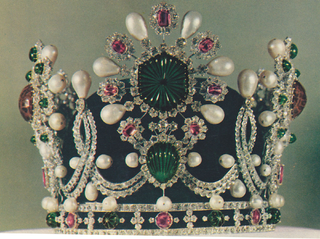 W
WThe Empress Crown is part of the coronation regalia used by the only Shahbanu (Empress) of Iran, Farah Pahlavi. It is part of the Iranian Crown Jewels and is currently on display at the Central Bank of Iran in Tehran.
 W
WFaravahar, also known as Forouhar, or Farr-e Kiyâni, is one of the most well-known symbols of Iran (Persia), and Zoroastrianism, the primary religion of Iran before the Muslim conquest of Iran, and of Iranian nationalism. There are various interpretations of what the faravahar symbolizes, and there is no universal consensus except to note that it does not represent the fravashi.
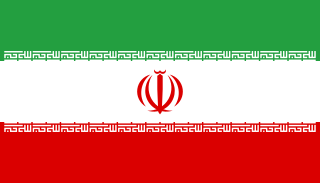 W
WThe flag of Iran, also known as the Three-Coloured Flag, is a tricolour comprising equal horizontal bands of green, white and red with the national emblem ("Allah") in red centred on the white band and the takbir written 11 times in the Kufic script in white, at the bottom of the green and the top of the red band.
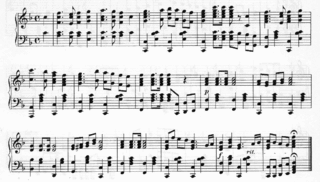 W
WThe "Imperial Anthem of Iran", also known with its opening line "Long Live our King" was the royal anthem of Iran from 1933 until the Islamic Revolution of 1979, when the monarchy was abolished. Its tune, when set to a different respective set of lyrics, also served as Iran's national anthem and flag anthem at the time.
 W
WThe Iranian National Jewels, originally the Iranian Crown Jewels, include elaborate crowns, thirty tiaras, and numerous aigrettes, a dozen bejeweled swords and shields, a number of unset precious gems, numerous plates and other dining services cast in precious metals and encrusted with gems, and several other more unusual items collected or worn by the Persian monarchs from the 16th century and on. The collection is housed at The Treasury of National Jewels, situated inside the Central Bank of Iran on Tehran's Ferdowsi Avenue.
 W
WThe Kiani Crown was the traditional coronation crown in the Iranian Crown Jewels which was used during the Qajar dynasty (1796–1925).
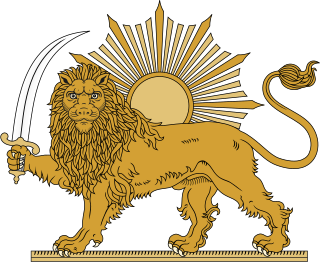 W
WThe Lion and Sun is one of the main emblems of Iran (Persia), and formerly was an element in Iran's national flag until the 1979 Iranian Revolution. The motif, which illustrates ancient and modern Iranian traditions, became a popular symbol in Iran in the 12th century. The lion and sun symbol is based largely on astronomical and astrological configurations: the ancient sign of the sun in the house of Leo, which itself is traced back to Babylonian astrology and Near Eastern traditions.
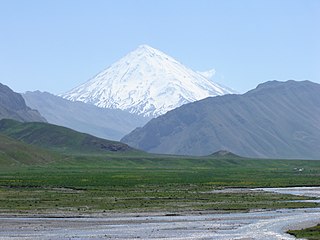 W
WMount Damavand, a potentially active volcano 5600-m high, is a stratovolcano which is the highest peak in Iran and the highest volcano in Asia. Damāvand has a special place in Persian mythology and folklore. It is in the middle of the Alborz range, adjacent to Varārū, Sesang, Gol-e Zard, and Mīānrūd. It is near the southern coast of the Caspian Sea, in Amol County, Mazandaran Province, 66 km (41 mi) northeast of the city of Tehran.
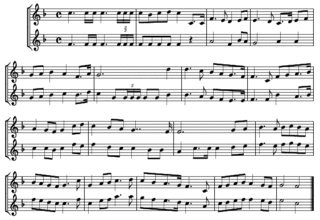 W
WThe "National Anthem of the Islamic Republic of Iran" is the national hymn of the Islamic Republic of Iran adopted in 1990.
 W
WThe common nightingale, rufous nightingale or simply nightingale, is a small passerine bird best known for its powerful and beautiful song. It was formerly classed as a member of the thrush family Turdidae, but is now more generally considered to be an Old World flycatcher, Muscicapidae. It belongs to a group of more terrestrial species, often called chats.
 W
WNowruz is the Iranian New Year, also known as the Persian New Year, which is celebrated worldwide by various ethno-linguistic groups.
 W
WThe Pahlavi Crown was the coronation crown used during the Pahlavi dynasty (1925–1979). It is held amongst the Iranian crown jewels by the current government of Iran.
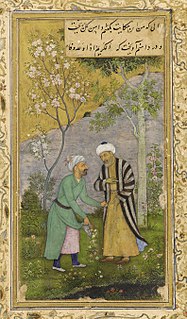 W
WAbū-Muhammad Muslih al-Dīn bin Abdallāh Shīrāzī, better known by his pen name Saadi, also known as Saadi of Shiraz, was a major Persian poet and prose writer of the medieval period. He is recognized for the quality of his writings and for the depth of his social and moral thoughts. Saadi is widely recognized as one of the greatest poets of the classical literary tradition, earning him the nickname "Master of Speech" or simply "Master" among Persian scholars. He has been quoted in the Western traditions as well. Bustan is considered one of the 100 greatest books of all time according to The Guardian.
 W
W"The Royal Salute", also known as "The Health of the Shah" was the royal and national anthem of Persia (Iran) between 1873 and 1909. Alfred Jean Baptiste Lemaire composed this anthem in 1873 on the orders of Naser al-Din Shah. It had no lyrics. Salâm-e Shâh was played in official ceremonies during the reign of Naser al-Din Shah, Mozaffar ad-Din Shah and Mohammad Ali Shah. It was also played as Persian national anthem during Naser al-Din Shah’s and Mozaffar ad-Din Shah’s European tours.
 W
WSimurgh is a benevolent, mythical bird in Iranian mythology and literature. It is sometimes equated with other mythological birds such as a "phoenix" and humā. The figure can be found in all periods of Iranian art and literature and is also evident in the iconography of Azerbaijan, Georgia, medieval Armenia, the Eastern Roman Empire, and other regions that were within the realm of Persian cultural influence.
 W
WPahlevani and zourkhaneh rituals is the name inscribed by UNESCO for varzesh-e pahlavāni or varzesh-e bāstāni, a traditional system of athletics originally used to train warriors in Iran (Persia) and adjacent lands. Outside Iran, zoorkhanehs can be found in Azerbaijan, and they were introduced into Iraq in the mid-19th century, where they seem to have existed until the 1980s. It combines martial arts, calisthenics, strength training and music. Recognized by UNESCO as the world's longest-running form of such training, it fuses elements of pre-Islamic Persian culture with the spirituality of Shia Islam and sufism. Practiced in a domed structure called the zurkhāneh, training sessions consist mainly of ritual gymnastic movements and climax with the core of combat practice, a form of submission-grappling called koshti pahlavāni.